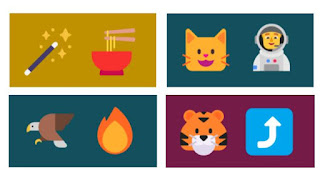Delicious! Building Community With the Common Language of Story & Food Part 1
Community celebrations are some of my favorite units to teach in our library. There is something special about bringing people together over the common language of books/story and I am thrilled to teach in a like-minded community.
 |
| Books purchased for our Book Feast Community Read |
This year's community read is entitled A Book Feast: Bridging Cultures and Building Community with the Common Language of Food. This celebration is a collaboration between the town's public library and an incredibly generous group called DLIT - the Dedham Library Innovation Team, an amazing group of folks who support vibrant libraries in our town's public and school libraries.
A selection of books around the theme of food and community are being read in our town (see the list of books here). Our school libraries received grant money to help us participate in this community celebration and with a selection of books and model magic, I prepared several weeks of reading, thinking, and creating around the topic of food. I named our unit "Delicious!"
Our essential unit question: How can we build community with the common language of food?
Food is a fantastic, concrete way to have a conversation with students about one aspect of culture. While we can also see culture in people's clothing, language, celebrations, music, and in what they do, food is a delicious way to open the door to conversations.
We began by reading Delicious: Poems Celebrating Street Food Around the World. My goal was to have students interact with the book as opposed to read it in its entirety.
 |
| This week's essential question: What does food look like around the world? |
I chose six poems from different parts of the world
 |
| The seventh pin identifies where we are. |
1st-3rd graders read these with me while 4th-5th graders did this independently.
 |
| Students could read the poem independently. |
.jpg) |
| Students could also press the play button and hear it read aloud. |
 |
| A puzzle revealed what the foods in the poem looked like and an audio file described them. |
 |
| Students then rated these foods on our "Delicious-ometers (spread around the library)." |
We wrapped up class with a group conversation. What was the most delicious thing you saw today? Students shared and gave "me too" signals as we salivated over the delicious foods we saw and heard about.
 |
| Some "Delicious-ometer" reports showed overwhelming willingness to try the foods. |
 |
| Other "Delicious-ometer" reports were more evenly spread out. |
My takeaways
Students were so excited when they saw food that they identified as something their families ate. We did a lot of ooh-ing and ah-ing over delicious images and descriptions. Two native Russian speakers proudly shared with me how to pronounce the delicious food we learning about.
By far, this was the most engaged I have seen my 4th and 5th graders this year. The presence of a puzzle and "gamifying" the activity kept students moving forward. I was concerned that the volume would deter students (six sets of puzzles/audio/voting), but across the board (grades 1-5), the novelty kept students moving forward. They were determined to make their votes count, and in order to vote, they needed to see and hear more about the food. Surprisingly, this worked for students across all grade levels (older students had harder puzzles).A 5th grader showed me that she could take what I made and tweak it to her liking. She was not happy with a 15 piece puzzle. She wanted more of a challenge and showed me how with the press of a single button she could turn it into a puzzle with as many pieces as she wanted. Who knew? They were invested!
This lesson was a big win, but with a big win comes GIANT sacrifice. I honestly spent upwards of 15 hours putting this together. I had lots to wrap my head around. I would do it again in a heartbeat, but this is not the kind of activity that is sustainable. I most definitely cannot do this on a weekly basis. More about the nuts and bolts of the activity are forthcoming.
Sharing with our community
I created a Wakelet for our unit. Wakelet has been an awesome way to bring our library to our parents. In one click parents can see what we are doing. Images have a greater impact than my old newsletters did.
.jpg) |
| I curate our related library activities with Wakelet. |
Resources
Inky's Amazing Escape: Community Read 2019
Maybe Something Beautiful: Reflecting on our Community 2017
Boy Who Harnessed the Wind: Reflecting on our Community Read 2017
Boy Who Harnessed the Wind: Community Read 2017
Boy Who Harnessed the Wind Part 2: Community Read 2017
Boy Who Harnessed the Wind Creating our Projects: Community Read 2017
Boy Who Harnessed the Wind Extending our Thinking: Community Read 2017

.jpg)



Comments
Post a Comment